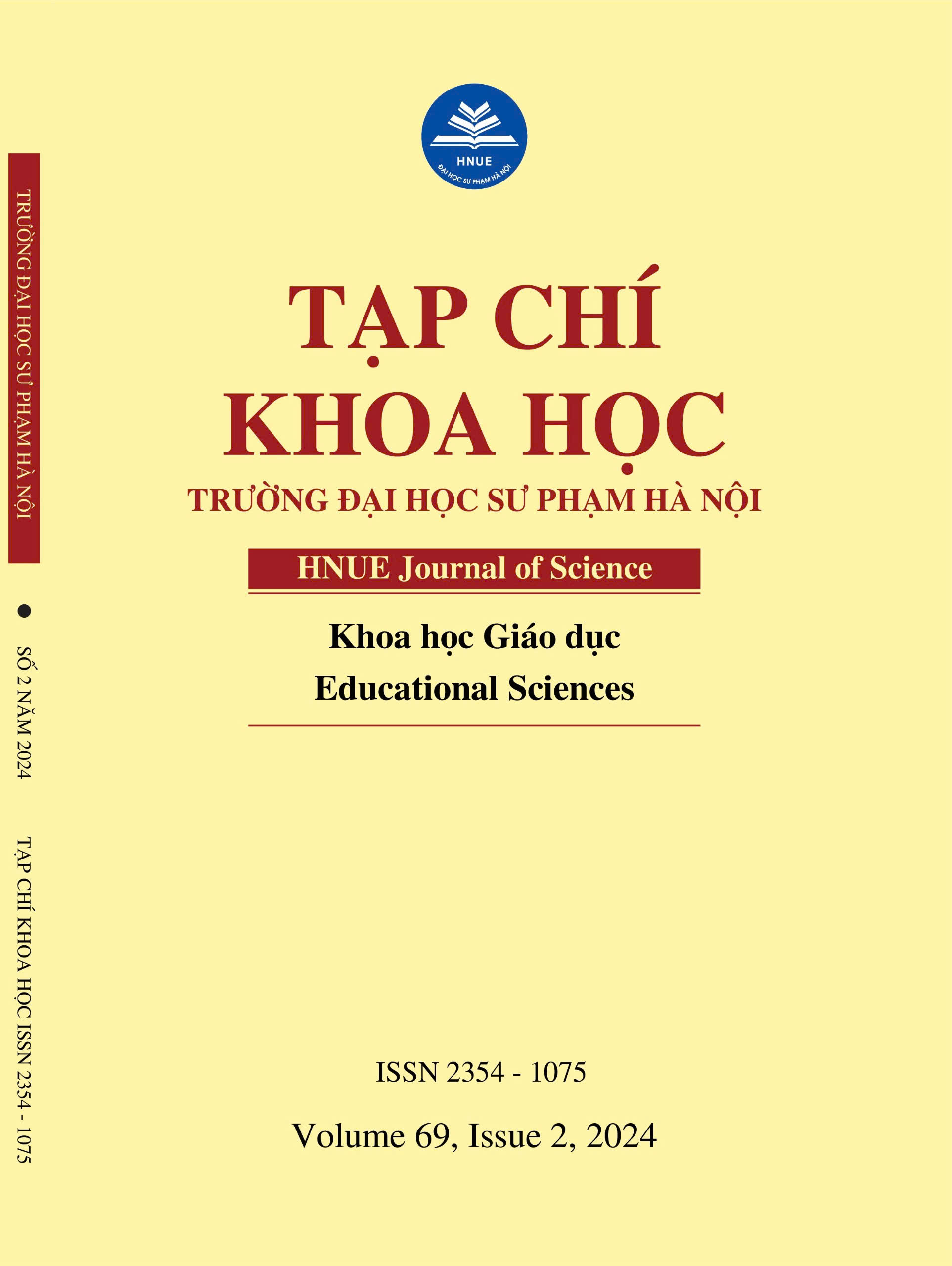NEW SOLUTION TO SUPPORT CHEATING DETECTION IN ONLINE EXAMS
DOI:
https://doi.org/10.18173/2354-1075.2024-0037Keywords:
exam monitoring, online exams, cheatingAbstract
Innovating examining in the direction of promoting technology, and bringing technology into exams is an inevitable trend because it minimizes unnecessary human intervention, approaching the world's examining and evaluation approach. Many universities around the world have been building online training systems to manage learning and organize online exams. This study builds a new monitoring function during the online exam process. A function is implemented on the computer device to detect the temporary exit behavior of candidates. Each time a candidate exits the test, the function will continuously save the screen image of the candidate's device in real time on the server. The images are saved as a basis for determining whether the contestant has cheated or not. The function is practically implemented in the subjects of 23 classes with about 1500 students from the 2021 to 2024 school year at Hanoi University of Education and gives accurate results in identifying cheating behavior of candidates with the rates according to school years being 40%, 19.37%, and 2.9%.
Downloads
References
[1] B Lin & S Wu, (2022). Digital Transformation in Personalized Medicine with Artificial Intelligence and the Internet of Medical Things. Interactive Biology, 25, 77-81.
[2] S Nosova, A Norkina, S Makar & G Fadeicheva, (2021). Digital transformation as a new paradigm of economic policy. Procedia Computer Science, 190, 657-665.
[3] Armanu, AA Rofiq, AS Hussein, AS Hussein & PD Ekawati, (2023). Digital Military Leadership in Digital Transformation, in Proceedings of the 1st Brawijaya International Conference on Business and Law.
[4] KKDS Oliveira & RACD Souza, (2022). Digital Transformation towards Education 4.0. Informatics in Education - An International Journal, 21, 283-309.
[5] N Iivari, S Sharma & L Ventä-Olkkonen, (2020). Digital transformation of everyday life - How COVID-19 pandemic transformed the basic education of the young generation and why information management research should care? International Journal of Information Management, 55.
[6] 749/QĐ-TTg, (2020). Chương trình Chuyển đổi số quốc gia đến năm 2025, định hướng đến năm 2030.
[7] NA Arteag, (2017). Facial Recognition System applied to Multipurpose Assistance robot for Social Human-robot Interaction (MASH), in AcialRS, Barcelona.
[8] NH Dung, (2022). Ứng dụng trí tuệ nhân tạo để phát hiện các hành vi gian lận trong thi trực tuyến. Tạp chí Khoa học Công nghệ Thông tin và Truyền thông, 4(1), 129-135.
[9] Respondus, (2024, March). Respondus Monitos, https://web.respondus.com/he/monitor/.
[10] A Karibyan & G. Sabnis, (2021). Students' perceptions of computer-based testing using ExamSoft. Science Direct, 13(8), 935-944.
[11] Edunow, (2024). Hệ thống quản lí đào tạo trực tuyến. https://edunow.vn/phan-mem-chong-gian-lan-thi-truc-tuyen/.
[12] NT Danh, (2022). Challenges and advantages of online teaching: The role of applying Information Technology in lectures and classes. Positive School Psychology, 6, 233-258.
[13] L Bergmans, N. Bouali, M. Luttikhuis & A. Rensink, (2021). On the Efficacy of Online Proctoring using Proctorio, in The 13th International Conference on Computer Supported Education.
[14] Respondus, (2024). LockDown Browser. https://web.respondus.com/he/ lockdownbrowser/.
[15] D Snezhana & V Nedeva, (2021). Assessment of Students during COVID-19 Case Experience, in Proceedings of the 16th International Conference on Virtual Learning ICVL.
[16] K Sylla, B Babou & S Ouya, (2022). Secure dematerialization of assessments in digital universities through moodle, WebRTC and Safe Exam Browser (SEB), 19th International Conference on Cognition and Exploratory Learning in Digital Age.
[17] MCM Ramos & JE Velasquez, (2013). Design and development of an online exam maker and checker. International Journal of Computers & Technology, 10(5), 1598-1640.
[18] O Team, (2024). About open CV. https://opencv.org/about.
[19] T team, (2024). Python NumPy Tutorial for Data Science, https://techvidvan.com/ tutorials/python-numpy-tutorial/. [Accessed 31 03 2024].
[20] I Ahmad, F Alqurashi, E Abozinadah & R Mehmood, (2021). A Novel Deep Learning-based Online Proctoring System using Face Recognition, Eye Blinking, and Object Detection Techniques. International Journal of Advanced Computer Science and Applications, 12(10), 847-854.
[21] Y Atoum, L Chen & AX Liu, (2017). Automated Online Exam Proctoring. Transactions on Multimedia, 19(7) 1609 - 1624.
[22] H Yang, P Liu, YH & Fu, (2021). Research on underwater object recognition based on YOLOv3. Microsyst Technol, 27(1), 1837-1844.
[23] Honorlock, (2024). Honorlock Online Proctoring, https://honorlock.com/.
[24] J Purpura, M Davoodifard & E Voss, (2021). Conversion to Remote Proctoring of the Community English Language Program Online Placement Exam at Teachers College, Columbia University. Language Assessment Quarterly, 18(1), 42-50.
[25] AV Artsiom Ablavatski, I Grishchenko & KRAM Zhdanovich, (2020). Real-time pupil tracking from monocular video for digital puppetry, in The CVPR Workshop on Computer Vision for AR/VR.
[26] Mercer, (2024). Mettl: The Global Leaders in Talent Assessment. https://mettl.com/.
[27] OFAE Contributors, (2023). Build cross-platform desktop apps with JavaScript, HTML, and CSS | Electron. https://www.electronjs.org/.
[28] M Parshina, (2018). JavaScript beyond the browser. Thesis, Turku University of Applied Sciences.
[29] R Rai, Socket IO Real-Time Web Application Development, (2023). Birmingham UK: Packt Pub Ltd.







